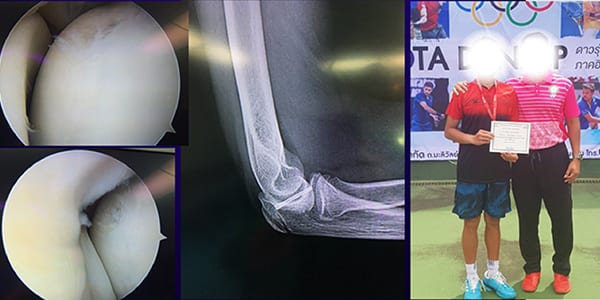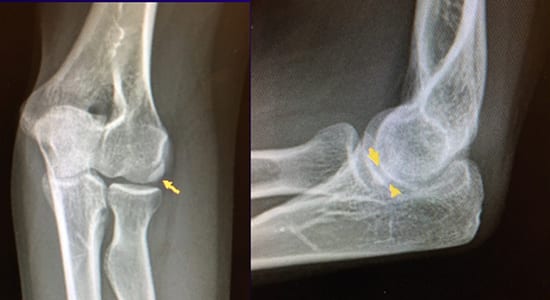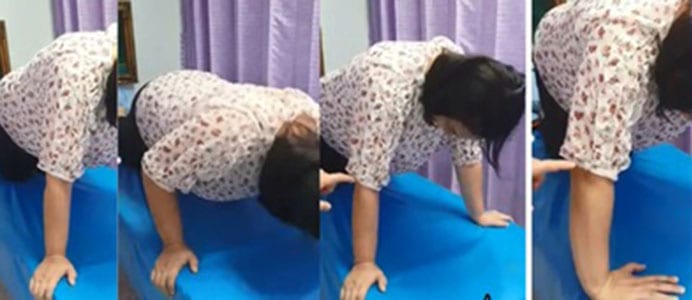10 FAQs about tennis elbow
HIGHLIGHTS:
- Elbow pain can be caused by a number of factors, including lateral epicondylitis (tennis elbow), cartilage damage, and calcific tendinitis. Diagnosis must include a thorough review of the patient’s medical history and a detailed health examination, carried out by a highly experienced physician.
- On some occasions tennis elbow goes away by itself. However, if the condition does not improve and is left untreated for a prolonged period, it could result in a complicated injury which could ultimately lead to early onset osteoarthritis.
- Surgical treatment of tennis elbow may be necessary in patients who have not responded well to non-surgical treatments.
Answering the 10 most frequently asked questions regarding tennis elbow
Previous surgery recipients

A 14 year old boy sought a second opinion at the hospital, complaining of pain in his elbow. Despite undergoing non-surgical treatment for tennis elbow for a number of months, his condition had not improved. In my position as his doctor, I diagnosed cartilage damage due to his reduced range of movement and his lack of improvement despite rest from activity and wearing a cast. An MRI scan showed that the cartilage had not yet fused, so arthroscopic surgery to repair the damaged cartilage was successful in returning him to the tennis court.

Another boy, this one aged 15 years, was a keen gymnast who was suffering from chronic elbow pain and an inability to fully extend the elbow joint. He had received pain relief medication aimed at treating his condition (tennis elbow), as well as physiotherapy and a period of rest and recovery, none of which were successful in improving his condition. It was therefore decided that he should be transferred to my care, where I was able to diagnose him with dislocated elbow cartilage. The patient underwent arthroscopic surgery and was able to once again fully extend his elbow within just 2 days of the procedure.

A 26-year-old woman was experiencing severe elbow pain and was unable to use her arm properly. After being diagnosed with tennis elbow, she had undergone unsuccessful treatment before being transferred to my care. By undertaking additional screening techniques—this woman had not yet undergone an x-ray—I was able to diagnose calcific tendinitis.

These images are from a 42-year-old male business owner who loves to exercise. After suffering elbow pain for around 6 months, he was diagnosed with tennis elbow and prescribed pain relief medication including injections, time off work, physiotherapy, shock wave therapy (SWT) and various anti-inflammatories, all with no success. The patient was then transferred to my care, where I utilized an arthroscopic technique to identify an impinge lateral plica during elbow flexion as the cause of his chronic pain. This patient had the plica successfully removed during arthroscopic surgery.

A 42-year-old nurse was unable to properly assume the press-up position (as pictured) or lift herself out of a chair due to the pain in her elbow. Pain relief medication, physiotherapy, and 3 separate steroid injections had all been unsuccessful in treating her condition, However, the steroids caused severe structural damage to her tendons, making the tendon reconstruction surgery we subsequently performed essential in her recovery from tennis elbow. Here is the example of severe complication from the steroid’s injection.

Another woman—aged between 39 years—had been diagnosed with tennis elbow and was treated with 3-5 steroid injections. However, her pain had actually increased and changed in nature, and was only relieved for short periods subsequent to the injections. Through arthroscopic surgery we were able to detect the presence of an impinge lateral plica in the elbow, which we removed. However, the many steroid injections had severely compromised her tendon structure, so we had to carry out additional lateral collateral ligament reconstruction surgery. Here is the example of severe complication from the steroids injection and demonstrated elbow arthroscopic surgery can do the reconstruction.
The Arthroscopic Surgery and Sports Orthopedic Center consists of an experienced team of medical professionals, specialized in all aspects of orthopedic surgeons, physical therapists and sports medicine doctors. These experts help rehabilitate the body, bones and joints to full fitness, so that all of our patients can enjoy the confidence that they are receiving the best treatments available and are able to return to their normal daily lives as quickly as possible.
Samitivej has a team ready to help and provide services for:
- Treatment Plan Consultation with a doctor via online video-call (second opinion)
- Treatment Planning if you have medical records or a price estimate from another hospital
- Cost Planning by our Appraisals Team with price guarantee (only for procedure packages without complications)
- Check Initial Coverage Eligibility with Thai and international insurance companies (only for insurance companies in contract with the Hospital)
Related
articles